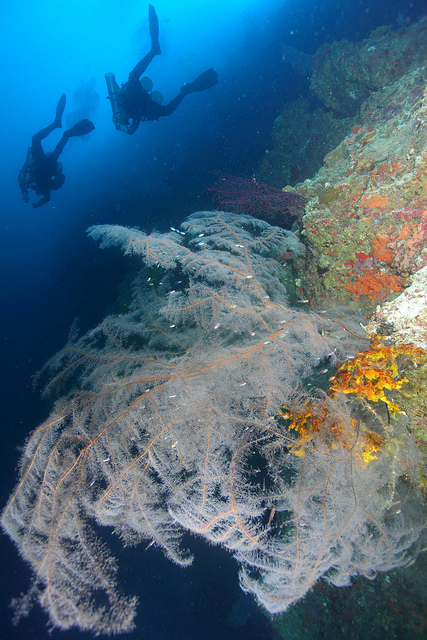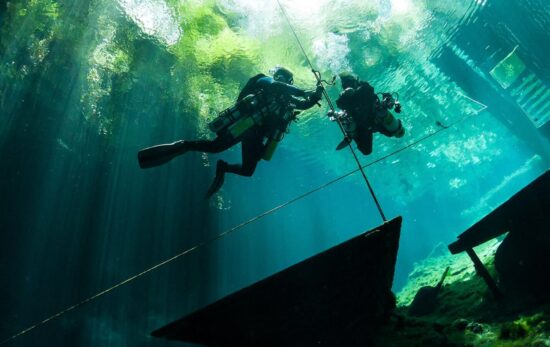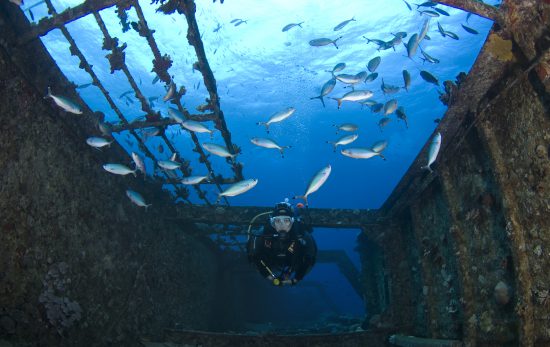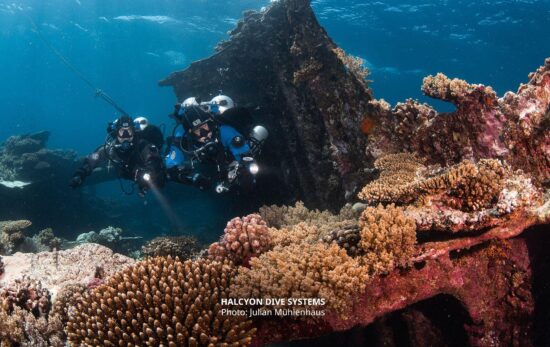As technical divers, we need to have a deeper understanding of the physiological processes that happen to our bodies when we expose them to increased pressures at advanced depths. The knowledge about issues, such as decompression, oxygen toxicity and inert gas narcosis is not static, but like everything in science is progressing and in flux.
A recent scientific study by Costantino Balestra and colleagues suggests that inert gas narcosis does not subside immediately after ascending to shallower depths. The effect of narcosis was measured by recording the flicker fusion frequency of divers at the surface and underwater. I am sure you have observed that you can see the spokes of a wheel when it’s still or turning slowly, but at a certain speed, they all melt into one disc, and you can’t discern the individual spokes anymore. The wheel-turning speed at which this visual fusion happens (in your head!) is called the flicker fusion frequency. This frequency is not constant but changes when people are tired or under the influence of alcohol or drugs. Typically, if you are buzzed in some way, the flicker fusion frequency is slower: You start seeing a fused disc earlier. This is easy to measure: You just let your study participant press a button once he stops seeing individual lines and starts seeing a fused disc.
In other words, your brain’s “shutter speed” is not constant, but influenced by fatigue, drugs and inert gas narcosis.
Using this flicker fusion frequency test, the investigators measured the time-course of inert-gas narcosis. Their experimental divers descended to a depth of 33 meters (110 feet) in a special indoor diving pool in Belgium. All dives were non-decompression dives, with a 20-minute bottom time. The scientists then measured the flicker fusion frequency before the dive, when divers arrived at 33 meters (110 feet), after 20 minutes at 33 meters (110 feet), and 30 minutes after the dive. After the last measurement, they had their divers breathe pure oxygen, and they then measured the flicker fusion frequency one last time.
Astonishingly, the flicker fusion frequency was still significantly slower 30 minutes after the dive, compared to the frequency before the dive. The effect of inert gas narcosis had persisted for 30 minutes, even after divers arrived back at the surface!
What does that mean for actual diving circumstances? Firstly, we need to be aware that the flicker fusion frequency measurement is only one proxy for brain function. It measures a certain performance of the visual system (the parts of the brain responsible for seeing fast things). It does not measure short-term memory or decision making powers.
Despite this caveat, it is likely that other brain functions are similarly affected by inert gas narcosis for prolonged times after high-pressure inert gas exposure. I am not aware of any special property of the visual system which would make it more susceptible to inert gas narcosis than other brain systems. So, what happens during technical dives in the 30 minutes after the period at depth with the most exposure to inert gases? Decompression stops happen, of course. So we can assume that we are still affected by narcosis to some degree even when hovering at 21 or 6 meters (69 to 20 feet), doing our gas switches. This is the critical phase of any technical dive, and we might still be reeling from a major high-pressure nitrogen & oxygen buzz!

The image above shows technical divers at a depth of 50 meters (164 feet) in the Philippines. They still have the decompression part of the dive ahead of them, and possibly so with the reeling effects of inert gas narcosis, even at shallower depths.
What is the possible answer to this problem? I believe it’s overtraining. Training a skill for multiple repetitions converts it to an automatism. The skill then becomes highly reproducible, fluid, and can be performed without investing the amount of higher cognitive capacities it initially demanded. Learning to switch gears in a manual shift car is a classic example of overtraining – what demanded concentration and effort for the beginner driver later becomes so automatic that for an experienced driver it’s no big deal to hold a conversation while shifting gears. The role of overtraining is well recognized in technical diving training, where we repeat critical skills, such as gas switches, many, many times. Don’t skip any of these drills, ever – the prolonged effect of inert gas narcosis is just one more reason to be diligent in your training!
Reference:
Balestra, C., Lafère, P., Germonpré, P., 2012. Persistence of critical flicker fusion frequency impairment after a 33 mfw SCUBA dive: evidence of prolonged nitrogen narcosis? Eur J Appl Physiol 112, 4063–4068.
This blog was written in 2016 by Dr. Klaus M. Stiefel, a biologist, underwater photographer and PADI Tec Deep instructor based in the Philippines. His blog is found at www.pacificklaus.com.


